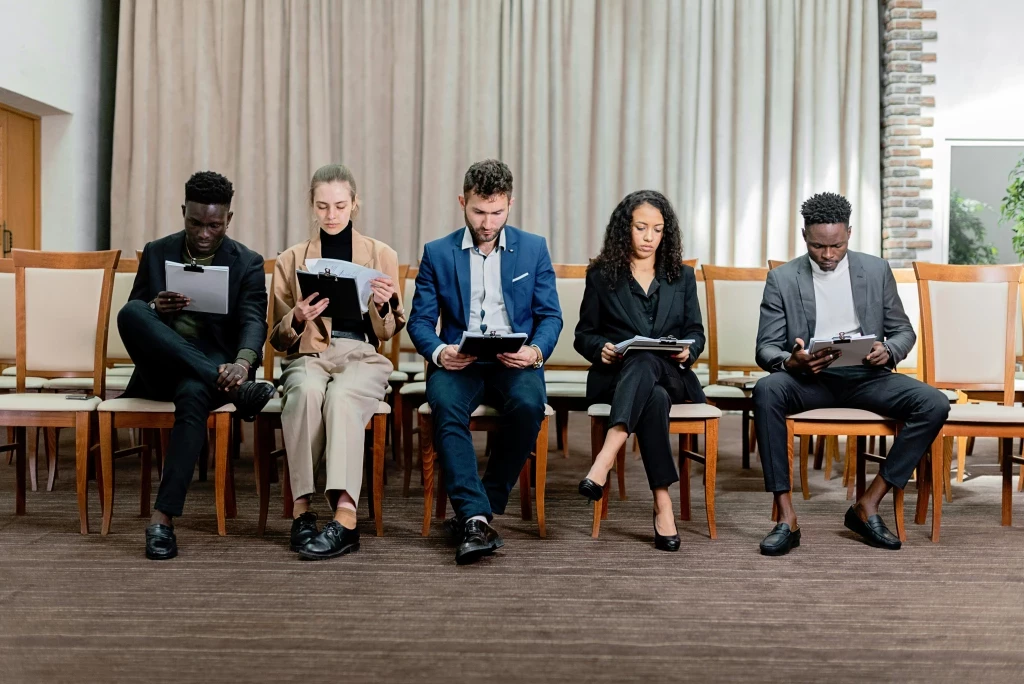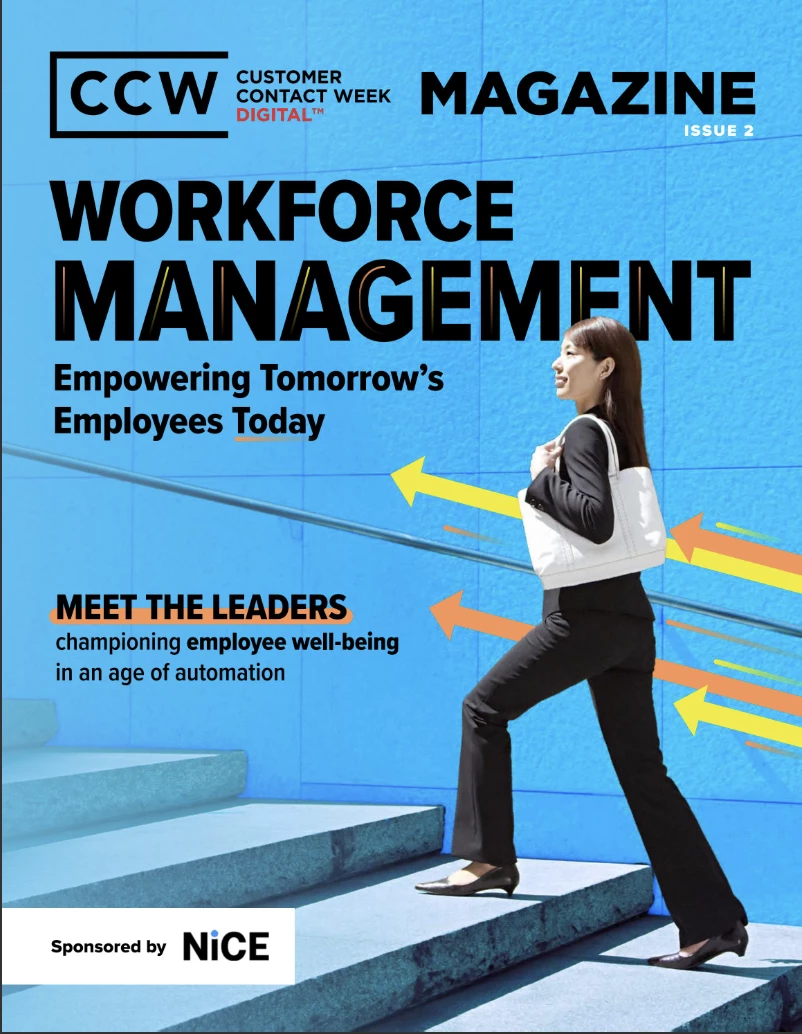Job Searching Is More Accessible Than Ever–But Not For Those With Disabilities
Talent recruiters and candidates alike are urging companies to lose their apprehension towards hiring people with disabilities, or risk devaluing half the U.S. workforce.
Add bookmark
We Don’t Call It A Job ‘Hunt’ For Nothing: Hiring In A Snapshot
Jobs are a funny, fickle thing. Getting a new one feels great. But finding a new one can be one of the most challenging, convoluted and monotonous tasks we have to go through.
Whether we’re thinking back to how we got our first jobs or wondering how we’ll get the next one, there are a lot of hoops to jump through before we sign that offer letter and seal the deal:
- applications to browse
- resumes to reshape
- cover letters to write
- phone calls to sit through
- interviews to prepare for
- competency tests to take
- documents to read and sign
- training modules to complete
amounting in more than a 9-5’s worth of work for each individual application, per candidate.
Keep in mind that the aforementioned list does not take into account all the networking, researching, and LinkedIn stalking that a job search will inevitably prompt. In addition, any related conversations with family, friends, coworkers and mentors may speed up, slow down, simplify, or complicate your employment efforts.
You’d think that for most of us, buckling down and going through the motions to connect with the right company is just the proactive, go-getter, “right thing to do” if you want a job in 2023.Theoretically, every able-bodied person ought to be capable of taking a few days or weeks aside.
If you really focus, you can submit at least 5 job applications in a week. And I mean, if you can’t take the pressure of the job search then you really don’t want to earn the actual job, right?
Not necessarily, especially when it comes to job-seekers with disabilities.
More Jobs, More Tech, More Problems for People With Disabilities
The U.S. job market may be flooded with options for the able-bodied person, but its long-lauded complexity leaves slim pickings for those with a disability. According to the Bureau of Labor Statistics, 1 in 4 adults is living with a disability, which the CDC describes as “any condition of the body or mind (impairment) that makes it more difficult for the person with the condition to do certain activities (activity limitation) and interact with the world around them (participation restrictions).”
Among these disabilities fall ADHD, depression, hearing loss, cerebral palsy, tourettes, anxiety, cancer, vision impairment and more. The American Disabilities Act of 1990 protects individuals from discrimination on the basis of employment. However, the confines of the law leaves a gray area. There is little guidance surrounding the limitations that technology used to conduct interviews and screen applicants creates for those who cannot deploy those tools as dictated by the able-bodied majority.
While texting and typing may be an area for modification for some, video capabilities are a concern for others. Individuals who are visually impaired can adapt to on-camera interviews with the use of screen readers, software programs that read text on screen using a speech synthesizer or braille.
When this tech is utilized, job applicants can enter into a conversation feeling supported, prepared and ready to ace their interview. But in some instances, the pomp and circumstance of the interview process can create unnecessary complications.
Hiring Tools Should Be About Modifications, Not Isolating “Exceptions”
Job applicants participating in video interviews at Amazon must use a video communication platform designed by the company that happens to be incompatible with some screen readers. A former recruitment coordinator for the company (who prefers she not be named) once faced that roadblock with a visually impaired candidate, and tells CCW Digital that the process of obtaining company approval for a Zoom interview so that the applicant could use their screen reader was arduous.
“It took four full days to simply get a response, just for them to say, ‘Yes, use Zoom'… And then when I asked if there was a corporate Zoom account that I could use, they told me I would have to pay for it myself.”
When working to accommodate her applicant’s needs, the former employee also attempted to reach out to DEI and accessibility groups established within Amazon, and says she received no response.
“I just couldn’t believe it because how is this the first time this issue has come up? It couldn't have been,” she told CCW Digital. “I was very shocked that they didn’t find a way to deal with this.”
It’s a frustration she says was shared by the candidate.
“It was a mess and the candidate had a terrible experience–totally understandable. They felt very isolated, very much not taken care of…I can imagine it probably made them not even want to go through with the process.”
Work Is A Community Builder, Employers Can Set The Framework
Combating that isolation is something that Roselle Rogers, VP of DEI at Circa, a Wisconsin-based SaaS-based diversity recruitment and OFCCP HR compliance technology solution company, is passionate about.
At the organization she helps to ensure that employers comply with the laws and regulations requiring nondiscrimination per the Office of Federal Contract Compliance in the U.S. Department of Labor.
In fact, she has spent over 16 years connecting people with disabilities (PWD) to companies, tools and technologies designed to support them in their job search.
Rogers was first introduced to Circa–known formerly as LocalJobNetwork, a network of job recruiting websites that served clients across all 50 U.S. states–while working as a HR recruiter at United Cerebral Palsy of Eastern Wisconsin.
In that time period, she came to recognize the different needs that individuals may have when applying for jobs.
“I learned a lot through observation the different challenges they have,” she shares with CCW Digital, “especially when they’re navigating online employment and even in-person employment.”
From Powerpoints with colors that are difficult to see, to cover letters that require many links, or presentations without audio or visual components, she notes that each avenue of the working person’s day may create a complication when not immediately designed to be accessible and considerate of others.
Building and participating in the global workforce isn't just good business, it’s a social impetus, she explains:
“Work is a very big part of who we are as individuals. It’s one of the ways that we socialize and connect to society. And if you’re not working, you’re missing a big part of that… and there are a lot of different ways that you can build those social connections. The important thing is having that purpose that gets you out there to connect to other people.”
But people with disabilities have continued to face barriers to community building, so much so that Rogers has spent a sizable amount of time in her career “figuring out how to get employers to buy into that value proposition.” She encourages members of society to lok past the fear, stigma, stereotypes and unconscious biases about people with disabilities that they may have.
“A lot of us are thinking about a physical disability. We’re not thinking about the person who is sitting next to us in the board meeting who’s suffering from depression, or who may have fibromyalgia, or who may have heart disease. Those all qualify as a disability.”
Supporting People With Disabilities Is About Dropping Assumptions
Kimberely Rivas-Adames has cerebral palsy, and says she approaches the job hunt in the same way other applicants do. “The process itself I don't think is difficult, it’s just like any other interviewing process," she says. "The problem with having a disability is that there’s always this assumption of lowered expectations.”
As texting or typing take longer for Rivas-Adames due to the impact of cerebral palsy on her body, she often uses voice memos or voice to text to communicate online and did so in order to facilitate her interview for CCW Digital. For her, working or completing tasks is not a matter of limitation or impossibility, but rather creativity and understanding of experiences of PWD.
“You come in and there’s already an assumption about you because of your disability, or sometimes employers just don't know,” notes Rivas-Adames. “If it's their first time working with someone who’s blind, there’s always apprehension on behalf of the employer when they encounter a disability they don't understand or know about.”
When encountering unknowns and hesitations, Rivas-Adames says people with disabilities have to come in not just job skills, but advocating skills.
“Say, ‘Well, why don't you take a chance on me?’ Unfortunately, we're still trying to level the playing field.”
Accessibility Does Not Have To Be An Afterthought. It Should Be The First Thought
In 2021, 19.1 percent of persons with a disability were employed, many of whom work part-time or identify as self-employed in order to ensure that their mode of work is focused on the modifications and accommodations that they may need.
However, Roselle Rogers urges organizations to create, utilize and invest in technology and tools that can serve their intended purpose for any individual, regardless of whether or not they have a disability now–or in the future.
“That could be me, that could be my mom, that could be my brother, my employee, team member or somebody I’m supporting, that could be my boss…the more that we begin to understand that we need to learn how to work with people with disabilities, we need to learn how to provide them with opportunities to continue to be productive, the sooner we would be better off.”
Want to learn more? Reach out to us at ccwomen@cmpteam.com
























